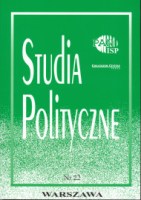Koncepcje i projekty utworzenia waluty europejskiej w latach 1939-1945
The eurocurrency concepts and projects in 1939-1945
Author(s): Maria Dunin-WąsowiczSubject(s): History
Published by: Instytut Studiów Politycznych PAN
Summary/Abstract: The article is devoted to the little known issues of the emergence, in different centres of the Allied block during the years of World War II (1939-1945), of the concepts of the European currency order, conventionally referred to as the "European money". The fundamental counterpoint for the ideas aired in the "democracy camp" are Adolph Hitler's concepts, aimed at making the Mark, as the currency of a victorious Germany, the main money in Europe. The intra-allied counterpoint, on the other hand, is the American vision of global security, which included monetary security. It is against a political perspective drawn in such a way that the article dwells on the Allied concepts formed under the pressure of the events of war, beginning with the Polish concepts of general Władysław Sikorski and of Anatol Miihlstein, then moving on to the designs of the German economists, the refugees who had escaped to the US, the concepts drawn up by the members of French resistance around general de Gaulle, and concluding with the British project elaborated by John Maynard Keynes. A short note also mentions an Italian project developed / by Luigi Einaudi, the first post-War president of Italy. The article concludes that while the then Allied concepts were not implemented, and the currencies of the European states were based on the gold and US dollar standards, is was as a result of these post-War events that those war-time visions could become a politically important starting point to successive, peaceful debates on the European currency order.
Journal: Studia Polityczne
- Issue Year: 2008
- Issue No: 22
- Page Range: 105-122
- Page Count: 18
- Language: Polish

